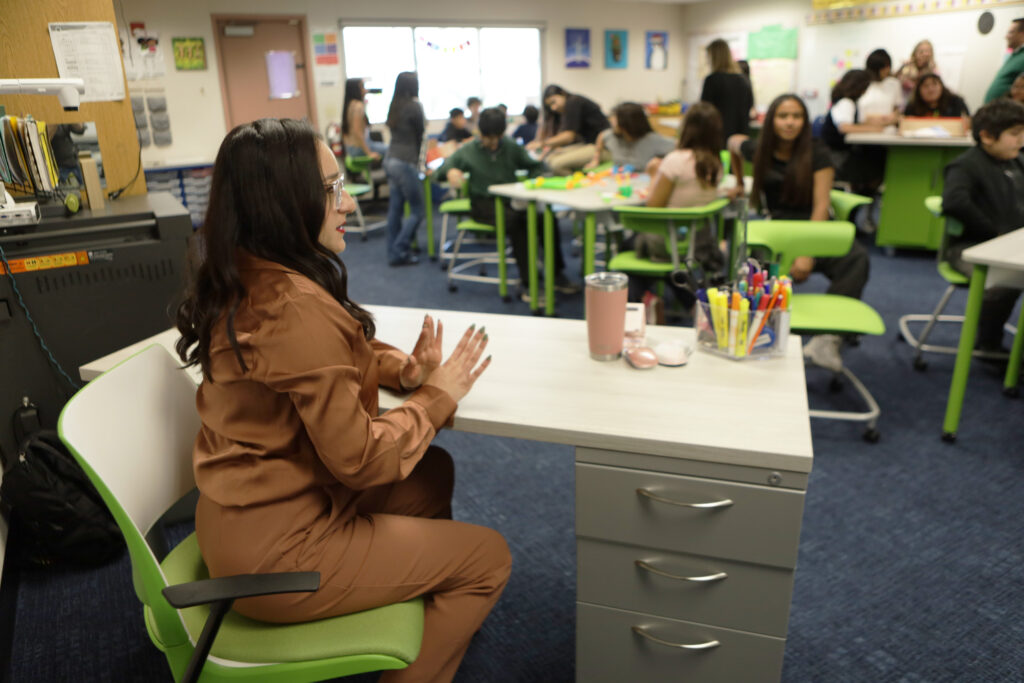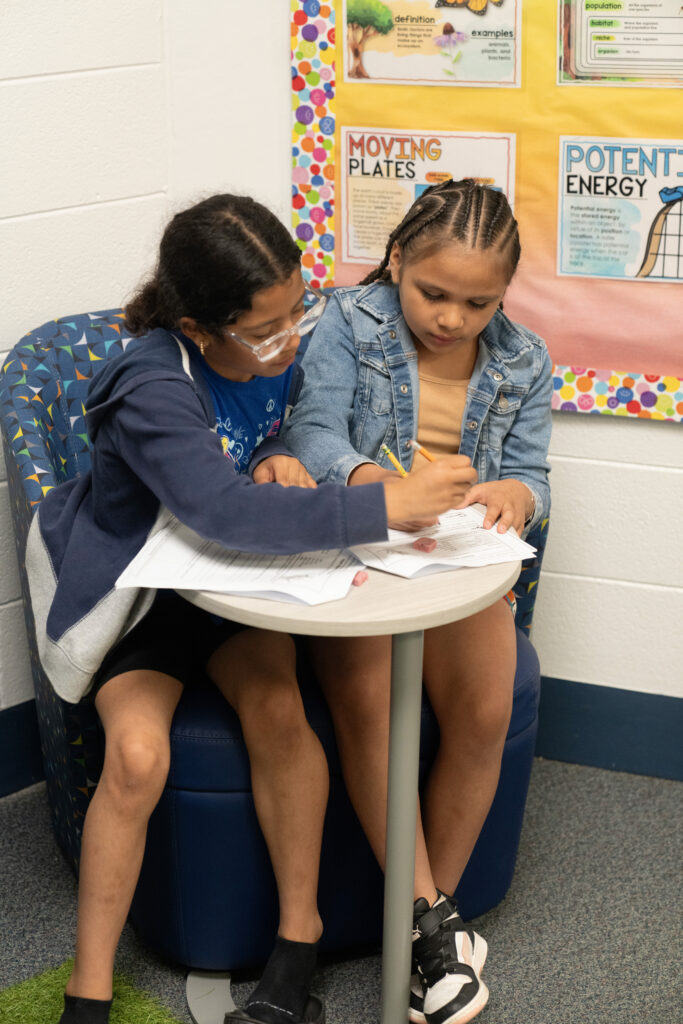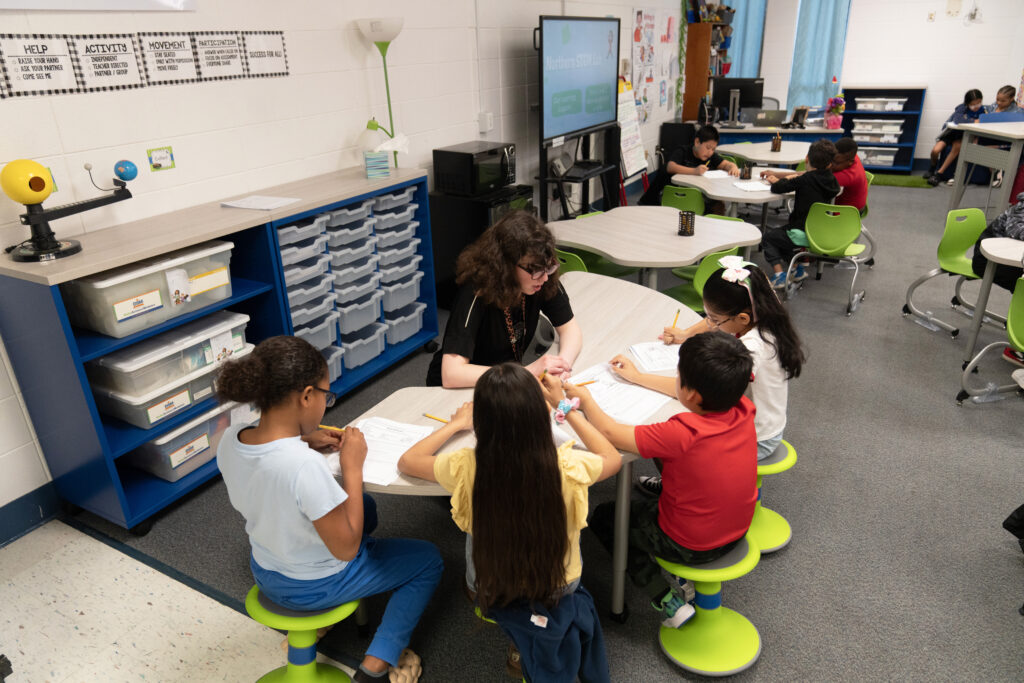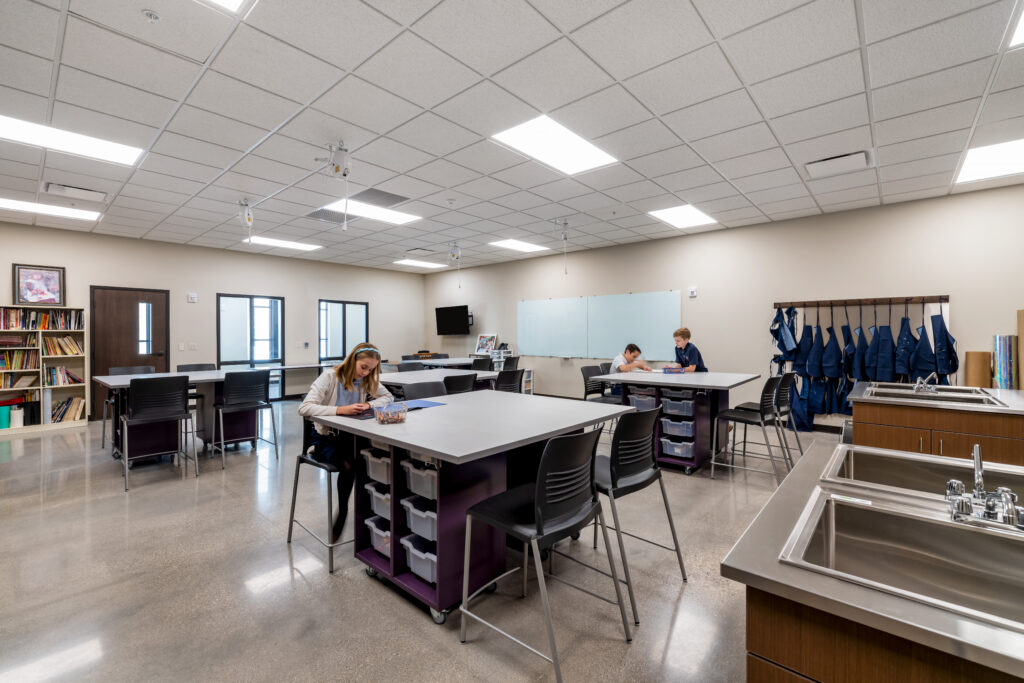Whether you went to school a few years or a few decades ago, you can probably think of a learning experience that was particularly memorable. Maybe it was a creative group project. Perhaps it was a teacher who noticed a special talent you yourself weren’t aware of, or a field trip that made a subject make sense in context. Whichever experience comes to mind, it likely left you feeling more engaged with your education — and more excited to come back to school the next day.
Unfortunately, many students today aren’t feeling that same sense of enthusiasm. In a recent survey from the Walton Family Foundation and Gallup, less than 60% of K-12 students reported learning something interesting at school over the past week. It’s no wonder that eight in ten teachers are concerned about levels of student engagement.

These complex challenges are at the top of our minds at KI. We’ve been thinking about ways to help educators increase student engagement — and help kids enjoy school again. K-12 educators are employing a variety of strategies to address the lack of student connection in the classroom, from project-based learning to personalized educational plans. But there’s one evidence-based strategy that’s often overlooked — equipping classrooms with furniture conducive to enthusiastic learning. In 2022, we established an annual competition in which K-12 educators submit dream design concepts for their learning environments. Each winner receives a suite of new KI furniture for their classroom.
When it came time to plan our second annual giveaway last year, we knew we had an opportunity to test the effects of furniture on student engagement. With grand prize winners from North Carolina, Kentucky, California, and Pennsylvania, we surveyed students in the winning classrooms before and after their new learning spaces came to life. The results are clear. Classroom furniture that promotes well-being, creates a comfortable environment, and supports learning increases student engagement.

The Impact of Classroom Furniture, According to Students
Consider our winner from California, Mrs. Youssofi’s sixth-grade classroom. Her winning design created a flexible learning space where she could personalize Spanish and English dual-language instruction for students with different learning styles. Her classroom used to be outfitted with traditional round tables and chairs. The redesigned space includes group worktables, booth seating, and desks and chairs on wheels. Those options allow students to choose the arrangement that works best for them.
We surveyed students across three parameters:
- The first was well-being. Does the furniture layout make them feel more supported in the classroom? Does it bring them more joy?
- Second was the environment itself. Is the classroom physically comfortable for sitting and walking around?
- Third, we focused on fostering community. Does the furniture support coming together and collaboration?
Student engagement surged in the redesigned classroom. Just take it from the kids themselves. Compared to their old classroom, Mrs. Youssofi’s students reported that their new learning space fosters:
Increased well-being

- 100% of students believe that their learning space is beautiful, compared to just 35% before.
- 92% of students believe that it is fun to learn in the space, compared to 50% before.
- 72% of students want to spend more time in the classroom, compared to 42% before.
- 80% of students believe that the space supports their individual needs, compared to 50% before.
A more comfortable environment
- 88% of students find the seating comfortable, compared to just 16% before.
- 96% of students believe their needs are well supported by different seating and table options, compared to just 38% before.
- 60% of students believe it’s easy to store their belongings, such as bags and coats, compared to just 24% before.
A better student learning community
- 96% of students believe it’s easy to break into group work, compared to just 35% before.
- 88% of students believe it’s easy to make and build things together, compared to 50% before.
- 84% of students believe it’s easy to share their work with others, compared to 50% before.
These are meaningful increases. When more students are having fun learning, sitting comfortably, and collaborating with their classmates, then they’re also more engaged in their coursework. The survey results suggest that simply changing the furniture in a classroom can have an outsized positive impact on student engagement and attendance.
Engagement-boosting Design Strategies
Of course, not every K-12 educator or administrator has the time and funding to give a classroom a complete makeover. But other evidence-based changes can create a more welcoming environment that encourages student interaction and engagement.

For instance, educators could add a few stools with a high-top table or a comfy lounge chair to a classroom to give students different seating choices. Chairs that are designed to safely move back and forth may be particularly appealing to students who have trouble focusing. Plush seating options that mirror furniture at home will be especially comforting to homesick students.
Improving student well-being doesn’t necessarily require purchasing all new furniture, either. Even rearranging existing classroom furniture in a thoughtful way can make a big difference. Creating a quiet nook can help students who need to spend time by themselves. Moving tables together can foster teamwork and have students view themselves as active contributors to their learning environment. By involving students in the design process, teachers can make sure the environment works for them — and foster a sense of responsibility and agency for upkeep.

Educators may want to consider furniture that doubles as storage, too. That could help eliminate clutter in the classroom and create a more visually pleasing environment. Tidy classrooms may also improve student behavior and performance by helping them focus better. A messy desk makes for messy work, but clean learning spaces help students concentrate on each task at hand.
Finally, research shows that design elements inspired by nature can enhance student well-being, mental health, and concentration. Simply raising the blinds or bringing plants to the classroom can help. Small improvements to students’ physical environment can have a big impact on their level of engagement in the classroom — and their level of excitement about learning.

Thoughtful Design Creates Big Impact
Enhancing student engagement doesn’t always require sweeping changes or costly renovations. As we’ve seen from the survey results, the right furniture can significantly improve student well-being, comfort, and collaboration, leading to greater excitement and participation in the classroom.
By incorporating flexible seating options, creating cozy nooks, and fostering an inviting, clutter-free environment, educators can make meaningful strides in boosting engagement. Even small adjustments to the classroom layout can create a more dynamic, student-centered space resulting in a big difference for student learning and growth.

